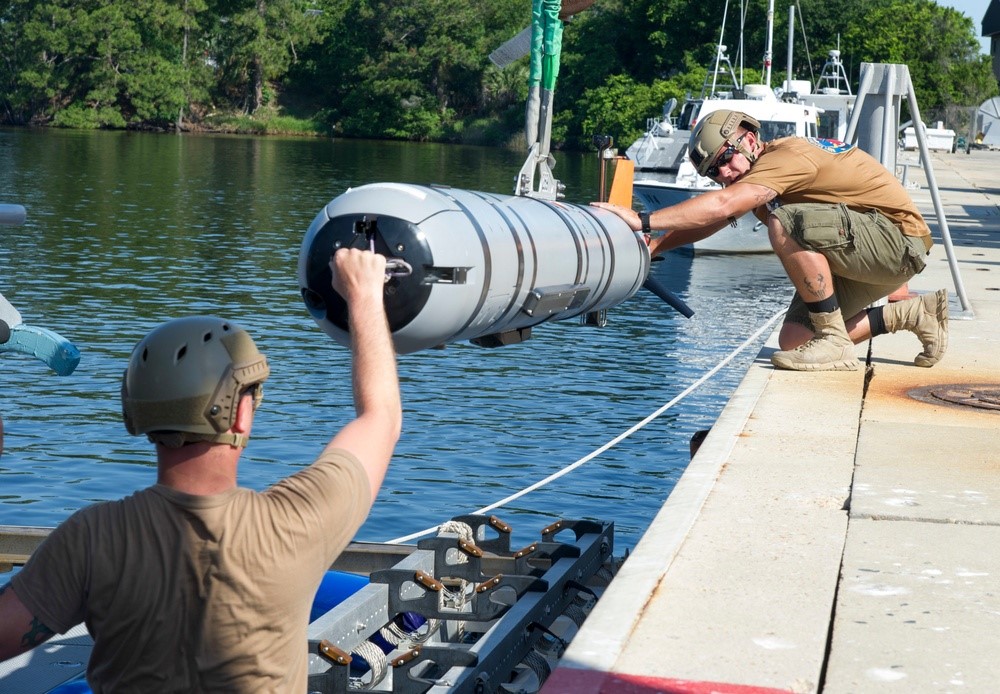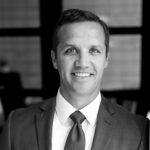
2023 marked a significant year in the development and application of unmanned underwater vehicles (UUVs). The defense sector saw several milestones in technological achievements and the historic use of UUVs in warfare. These events position 2024 as another breakthrough year for undersea warfare and systems. Our analysts note three areas to track over the next several months.
- Progress of U.S. Navy UUV programs
In closing out the year, the U.S. Navy accepted delivery of the first autonomous Orca Extra Large Unmanned Underwater Vehicle (XLUUV) in December 2023. Though the XLUUV program experienced setbacks, running $242 million over budget and three years behind schedule, the delivery of the first of six prototypes by Boeing sets up a testing schedule that will influence the platform’s military capabilities and future acquisition plan. The Navy anticipates receiving the remaining five XLUUVs by the end of 2024.
The delivery of the modular 51- to 85-foot, 50-ton vessel allows the Navy to explore how an unmanned submarine could employ offensive weapons like torpedoes and mines from a vehicle that can remain at sea autonomously for months. This year’s testing progress of the Orca UUV could inform strategic planning for a future conflict in the Indo-Pacific where the U.S. is likely to employ undersea assets.

The Navy is poised to establish a production foundation in 2024 with its small unmanned undersea vehicle (SUUV) program. After experimentation and testing, the service selected Huntington Ingalls Industries (HII) in 2022 to build its Lionfish SUUV fleet based on the REMUS 300 UUV. In October 2023, HII announced a nine-unit contract build with options for up to 200 SUUVs. The deal to produce vehicles over the next five years could exceed $347 million and marks a step toward more widespread fleet implementation of UUVs.
- Technological developments in the UUV domain
In technical development and research, the Navy and industry partners continue to push the boundaries of UUV capabilities. In July 2023, L3 Harris reported it conducted, alongside the Navy, the first-ever launch and recovery of an autonomous underwater vehicle (AUV) from an underway submarine. Five months later, the USS Delaware, a fast-attack submarine, successfully launched and recovered an HII REMUS UUV from its torpedo tube.
While UUV and AUV technology matures, these vehicles will become increasingly important for commercial and defense purposes. Government agencies, the military, and private companies continue to utilize and test AUVs for high-resolution seabed and water column mapping. Data from these collections can advance understanding of the marine environment and strengthen undersea warfare capabilities. UUVs can collect acoustic signatures for antisubmarine warfare purposes and monitor and patrol critical waterways.
We are also likely to see advances in UUV propulsion and communications technology. Unlike the air domain, the world’s oceans potentially allow organic power generation. The Defense Advanced Research Projects Agency’s (DARPA) Manta Ray program to develop a long-endurance UUV will employ glider technology through variable buoyancy propulsion or temperature differentials converted to electric power. PacMar, one of two contenders for the Manta Ray, conducted a splash test of its UUV in 2023, and Northrop Grumman will test a prototype this year.
Underwater communication and networking is a challenging and underdeveloped area of UUV technology, but last year yielded headway. In September 2023, several NATO allies and observer nations conducted an at-sea military exercise to test 5G networking with UUVs, among other platforms. NATO navies are exploring interoperability among aerial drones, surface vessels, and UUVs through 5G mesh networks. Advancements in underwater information sharing forge opportunities for manned-unmanned teaming (MUM-T) in defense applications. Practical testing and demonstrations during the coming year could drive tactical concepts for future naval conflict.
- UUV use in naval warfare
As a more cost-effective and attainable option than a manned submarine, similar to unmanned aerial vehicles (UAVs), UUVs are increasingly employed in combat by smaller nations and groups. Their use in the two major armed conflicts of 2023, the Russia–Ukraine and Israel-Hamas wars, demonstrate their global proliferation and value as a combat weapon. Traditional naval powers like Russia and China and non-state groups like Hamas now operate UUVs or underwater autonomous attack vehicles for military purposes. Indeed, the potential capabilities of UUVs could shape future engagements between military peers and mismatched adversaries alike. Some experts believe UUVs could “democratize” power among the world’s navies.
The passing of 2023 marks another year closer to–what some officials and analysts believe is–an inevitable outbreak between China and Taiwan. Considering their use in 2023, UUVs will feature prominently in a potential conflict in the Taiwan Strait and South China Sea. One possibility is a Chinese softening attack on Taiwan and its allies’ infrastructure utilizing UUVs and offensive mining. Conceivably, UUVs could attack subsea cables where 99% of intercontinental data is transmitted. In 2023, two Chinese ships severed critical internet cables to Taiwan.
Within the first days of 2024, Houthi attacks on international shipping vessels in the Red Sea and the American and allied naval response presented an environment for possible UUV warfare. The ongoing Houthi attacks prominently feature weaponized UAVs and missiles. However, the area’s strategic marine nature, like the Bab el-Mandeb chokepoint at the southern end of the Red Sea, begs caution toward and consideration of underwater weapons. These current events bear noting Houthi rebels captured an American UUV in 2018.
With significant developments in U.S. programs, technological advances, and warfare applications, 2023 marked a busy year for UUVs. If last year is any indication, conditions are set for 2024 to be another eventful year for undersea warfare. Forecast International remains abreast and continues to monitor the pulse. We are committed to observing, understanding, and analyzing how unmanned systems and underwater vehicles continue to shape the future.
A former naval officer and helicopter pilot, Jon covers a range of Forecast International reports and products, drawing on his 10-year background in military aviation, operations, and education. His previous military assignments include multiple overseas deployments supporting operations in the Arabian Gulf, NATO exercises, and humanitarian missions. Jon’s work is also influenced by his time as a former Presidential Management Fellow and international trade specialist at the Department of Commerce.
Before joining Forecast International, Jon also served as an NROTC instructor and Adjunct Assistant Professor at the University of Texas, where he taught undergraduate courses on naval history, navigation, defense organization, and naval operations and warfare. A lifelong reader and learner, his academic and professional interests include aviation, political and military history, national defense and security, and foreign area studies.




